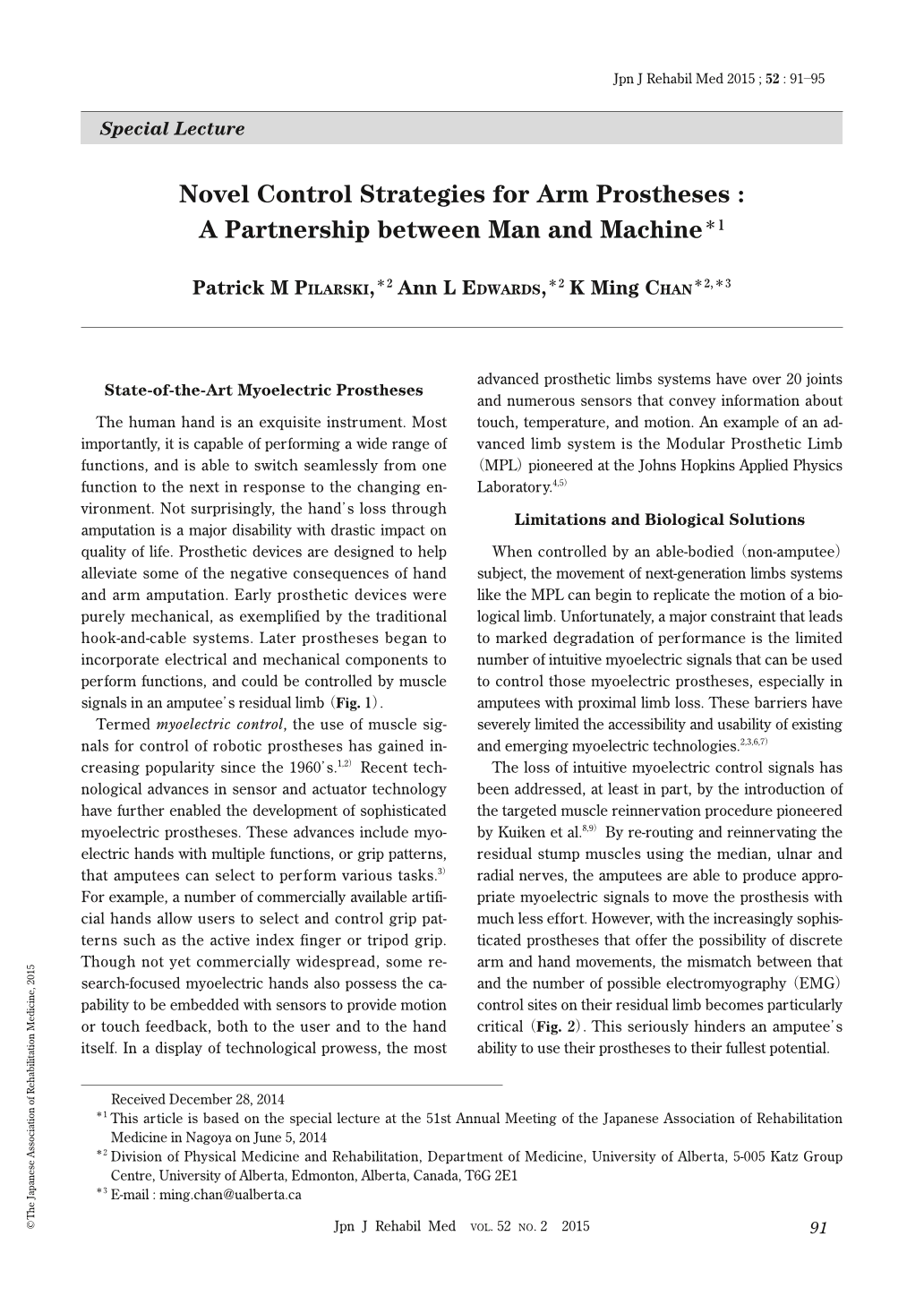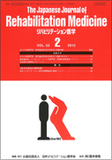Japanese
English
- 販売していません
- Abstract 文献概要
- 1ページ目 Look Inside
- 参考文献 Reference
State-of-the-Art Myoelectric Prostheses
The human hand is an exquisite instrument. Most importantly, it is capable of performing a wide range of functions, and is able to switch seamlessly from one function to the next in response to the changing environment. Not surprisingly, the hand's loss through amputation is a major disability with drastic impact on quality of life. Prosthetic devices are designed to help alleviate some of the negative consequences of hand and arm amputation. Early prosthetic devices were purely mechanical, as exemplified by the traditional hook-and-cable systems. Later prostheses began to incorporate electrical and mechanical components to perform functions, and could be controlled by muscle signals in an amputee's residual limb (Fig. 1).
Termed myoelectric control, the use of muscle signals for control of robotic prostheses has gained increasing popularity since the 1960's.1,2) Recent technological advances in sensor and actuator technology have further enabled the development of sophisticated myoelectric prostheses. These advances include myoelectric hands with multiple functions, or grip patterns, that amputees can select to perform various tasks.3) For example, a number of commercially available artificial hands allow users to select and control grip patterns such as the active index finger or tripod grip. Though not yet commercially widespread, some research-focused myoelectric hands also possess the capability to be embedded with sensors to provide motion or touch feedback, both to the user and to the hand itself. In a display of technological prowess, the most advanced prosthetic limbs systems have over 20 joints and numerous sensors that convey information about touch, temperature, and motion. An example of an advanced limb system is the Modular Prosthetic Limb (MPL) pioneered at the Johns Hopkins Applied Physics Laboratory.4,5)
State-of-the-Art Myoelectric Prostheses
The human hand is an exquisite instrument. Most importantly, it is capable of performing a wide range of functions, and is able to switch seamlessly from one function to the next in response to the changing environment. Not surprisingly, the hand's loss through amputation is a major disability with drastic impact on quality of life. Prosthetic devices are designed to help alleviate some of the negative consequences of hand and arm amputation. Early prosthetic devices were purely mechanical, as exemplified by the traditional hook-and-cable systems. Later prostheses began to incorporate electrical and mechanical components to perform functions, and could be controlled by muscle signals in an amputee's residual limb (Fig. 1).
Termed myoelectric control, the use of muscle signals for control of robotic prostheses has gained increasing popularity since the 1960's.1,2) Recent technological advances in sensor and actuator technology have further enabled the development of sophisticated myoelectric prostheses. These advances include myoelectric hands with multiple functions, or grip patterns, that amputees can select to perform various tasks.3) For example, a number of commercially available artificial hands allow users to select and control grip patterns such as the active index finger or tripod grip. Though not yet commercially widespread, some research-focused myoelectric hands also possess the capability to be embedded with sensors to provide motion or touch feedback, both to the user and to the hand itself. In a display of technological prowess, the most advanced prosthetic limbs systems have over 20 joints and numerous sensors that convey information about touch, temperature, and motion. An example of an advanced limb system is the Modular Prosthetic Limb (MPL) pioneered at the Johns Hopkins Applied Physics Laboratory.4,5)

Copyright © 2015, The Japanese Association of Rehabilitation Medicine. All rights reserved.


